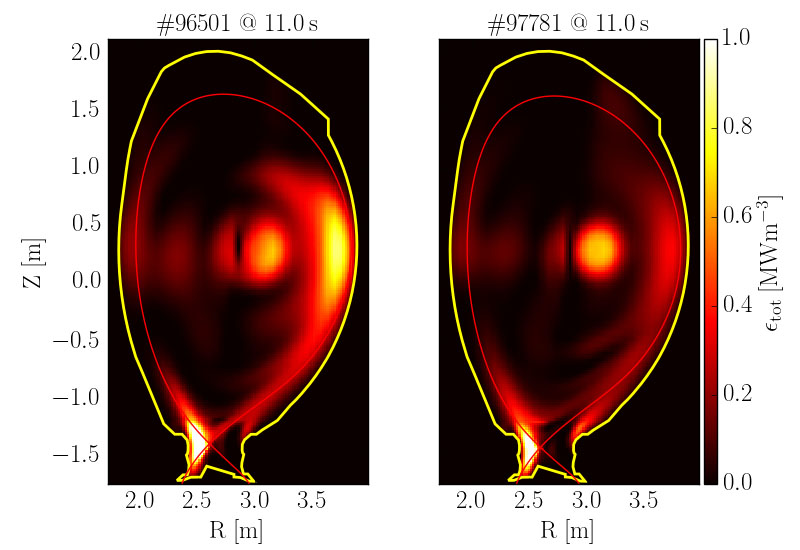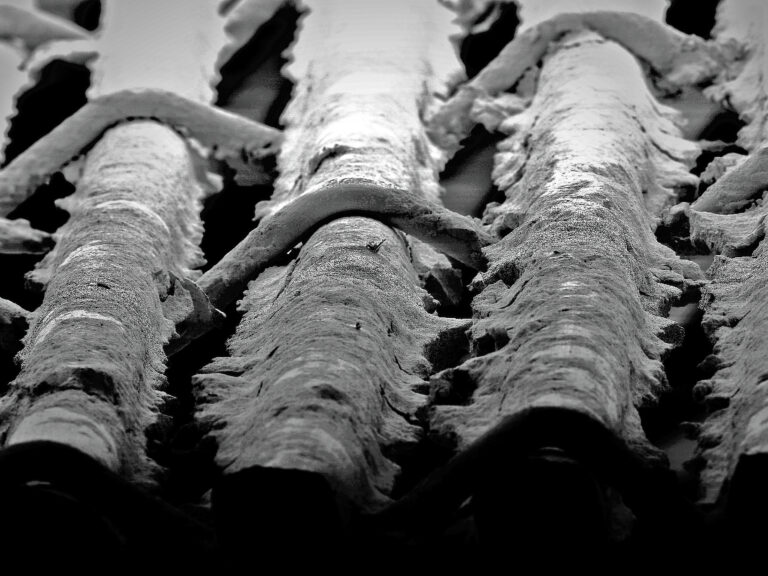The result is a major boost for the international fusion project ITER and future fusion power plants, as one of the key challenges in developing fusion energy is keeping the hot, charged gas (plasma) inside a fusion device as pure as possible to optimise performance. This research is part of Mission 1 in the EUROfusion research programme’s European Research Roadmap to the Realisation of Fusion Energy.
Tungsten contaminant
The research, which was published in the scientific journal Nuclear Fusion, shows that a plasma can sweep out one third of unwanted tungsten ions (charged atoms), which would otherwise cool the plasma by absorbing heat and radiating it away. Tungsten is a melt-resistant metal that is already used inside the JET device and will be used in future fusion devices like ITER and the demonstration power plant DEMO.
Heat barrier
The experiments conducted by Anthony Field and other EUROfusion researchers at JET showed that the plasma can be made to keep out some of the tungsten contaminants by strengthening the heat barrier at the outer edge of the plasma. By setting up a steep temperature jump at the edge of the plasma, the charged gas was able to drive out some of the relatively heavy tungsten ions because plasma particles impact harder on the ‘hot’ side of an ion than on the ‘cool’ side.
Inside the heat barrier, temperatures rise relatively slowly over several meters distance to reach the necessary 100+ million degrees Celsius at the heart of the plasma. But at the edge, the heat barrier causes a 20 million degrees Celsius jump across a distance the thickness of a triple-glazed window. The heat barrier at the plasma edge reduced both the tungsten content and the heat loss it causes inside the JET plasma by about one third.

A major step forward
The finding is excellent news because it will make it easier for future fusion devices like the ITER facility to reach and maintain fusion conditions, say the researchers. Although the effect was already known from computer simulations, the research now published is the first-ever experimental validation and shows that the screening effect can be counted on in ITER and in future fusion power plants. This breakthrough is a major step towards the realization of fusion energy as a sustainable and reliable source of energy for the future.
Quotes from the researchers
Dr Anthony Field, senior fusion researcher at UKAEA (UK):
“Our measurements showed that we can achieve one of the important goals of fusion: having the plasma keep itself clear of tungsten contaminants that would cool it, by maintaining a heat drop of twenty million degrees Celsius at the edge of our plasma. Those tungsten ions could otherwise radiate so much heat that they would prevent us from reaching fusion conditions altogether.”
Dr Joëlle Mailloux, JET task force leader at UKAEA (UK):
“This is a key result that was predicted by theory but which we never managed to observe before: under the right conditions, we can have our plasma expel the metallic impurities to its very edge so they don’t cool the confined plasma where fusion takes place. This is a crucial ingredient for sustained high fusion performance in ITER.”
Dr Alberto Loarte, head of the science division at ITER (France):
“The JET results confirm a long-standing prediction that high-performance plasmas required for fusion power production can shield themselves very effectively from tungsten impurities coming from the divertor. This was very challenging to demonstrate experimentally, because you need to approach ITER-like conditions in smaller, present-day tokamaks. The JET scientists have gotten close enough to ITER conditions to see this new effect at play. This provides a robust basis for our predictions for how ITER plasmas will behave.”
Dr Athina Kappatou, scientific co-ordinator of JET experiments from the Max-Planck Institute for Plasma Physics IPP (Germany):
“A key challenge we face when trying to sustain high fusion performance in JET is keeping out metallic impurities that originate from the device’s divertor. We were aware that theory predicted how ITER plasmas could use a steep temperature drop to keep these impurities out, but this had not yet been demonstrated in a current device. It was very exciting to see that we could approach ITER conditions close enough to demonstrate this effect in JET plasmas and benefit from it in our quest for high fusion performance.”
Fusion energy record at JET
Record fusion energy results at the Joint European Torus (JET) announced in February of 2022 were the clearest demonstration to date of the potential for fusion, the reaction that powers the Sun and stars, to someday create safe and sustainable low carbon energy here on earth.
The record of fifty-nine megajoules of sustained fusion energy was achieved at JET by researchers from the EUROfusion consortium of experts, students, and staff from across Europe, co-funded by the European Commission.




